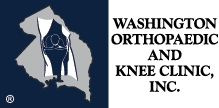- Patellar Instability
-

- Any damage to the supporting ligaments may cause the patella to slip out of the groove either partially (subluxation) or completely (dislocation). This misalignment can damage the underlying soft structures such as muscles and ligaments that hold the kneecap in place.
-
- Kneecap Bursitis
-

- Bursitis refers to the inflammation and swelling of the bursa. Inflammation of the bursa in front of the kneecap (patella) is known as kneecap bursitis or prepatellar bursitis.
-
- Meniscal Injuries
-

- Meniscal tears are one of the most common injuries to the knee joint. It can occur at any age but are more common in athletes involved in contact sports. The meniscus has no direct blood supply and for that reason, when there is an injury to the meniscus, healing is difficult.
-
- Knee Ligament Injuries
-

- Knee problems may arise if any of these structures get injured by overuse or suddenly during sports activities. Pain, swelling, and stiffness are the common symptoms of any damage or injury to the knee.
-
- ACL Tears
-

- The anterior cruciate ligament (ACL) is one of the major ligaments of the knee. It is located in the middle of the knee and runs from the femur (thighbone) to the tibia (shinbone).
-
- MCL Tears
-

- The medial collateral ligament (MCL) is the ligament located on the inner part of the knee joint. It runs from the femur (thighbone) to the top of the tibia (shinbone) and helps in stabilizing the knee.
-
- PCL Injuries
-

- Posterior cruciate ligament (PCL), one of the four major ligaments of the knee, is situated at the back of the knee. It connects the thighbone (femur) to the shinbone (tibia).
-
- Articular Cartilage Injury
-

- Articular or hyaline cartilage is the tissue lining the surface of the two bones in the knee joint. Cartilage helps the bones move smoothly against each other and can withstand the weight of the body during activities such as running and jumping.
-
- Osteochondral Defect Of The Knee
-

- An osteochondral defect, also commonly known as osteochondritis dissecans, of the knee refers to a damage or injury to the smooth articular cartilage surrounding the knee joint and the bone underneath the cartilage.
-
- Knee Fracture
-

- A fracture is a condition in which there is a break in the continuity of the bone. In younger individuals, these fractures are caused by high energy injuries, as from a motor vehicle accident.
-
- Multiligament Knee Injuries
-

- Injury to more than one knee ligament is called a multiligament knee injury and may occur during sports or other physical activities.
-
- Knee Sports Injuries
-

- Trauma is any injury caused during physical activity, motor vehicle accidents, electric shock, or other activities. Sports trauma or sports injuries refer to injuries caused while playing indoor or outdoor sports and exercising.
-
- Knee Pain
-

- Knee pain is a common condition affecting individuals of various age groups. It not only affects movement but also impacts your quality of life. An injury or disease of the knee joint or any structure surrounding the knee can result in knee pain.
-
- Knee Dislocation
-

- Knee dislocation is a condition that occurs when the bones that form the knee joint, namely the femur or thigh bone get separated from the shin bone.
-
- Osteoporosis
-

- Osteoporosis means “porous bone”. This is a silent disease since there may be no symptoms until a fracture occurs. In this disease bones are weakened by the loss of minerals, especially calcium.
-
- Tumors
-

- Benign bone tumors which mostly are seen around the knee joint are Fibrous Cortical Defects, Non-Ossifying Fibroma and Osteochondroma.
-
- Arthritis
-

- There are numerous types of arthritis and almost all of them has the potential to involve the knee joint.
-
- Synovial Diseases
-

-
• Synovial Osteochondromatosis
• Synovial Lipomatosis (Hoffa’s Disease)
• Pigmented Villonodular Synovitis (PVNS)
-
- IT Band Syndrome
-

- Iliotibial band is a layer of connective tissue which starts as a muscle on the outside of the thigh, travels along the outside of the lower thigh and becomes thinner and ultimately attaches to the outside portion of the upper leg (tibia).
-
- Baker’s Cyst/Popliteal Cyst
-

- Baker’s Cyst is abnormal/excessive collection of the joint fluid in the space behind the knee (the popliteal space). This Cyst usually connects with a narrow passage to the membranes around the knee or within the joint.
-
- Extensor Mechanism Injuries
-

- Extensor mechanism of the knee is the strongest muscle tendon unit in human body. This unit is composed of the quadriceps (thigh muscle), quadriceps tendon, the patella (kneecap) and the patellar tendon.
-
- Fractures
-

- These fractures include those on the end of the thigh bone (femur), Upper part of the shin bone (tibia) and patella (kneecap).
-
- Chondral/Osteochondral Injuries of the Knee
-

- These injuries are generally as a result of direct blow to the knee or twisting/turning injuries. In some cases, it may be associated with ligament injuries of the knee such as anterior cruciate ligament (ACL) injuries.
-
Call Us
-
8318 Arlington Blvd
Suite 100A
Fairfax, VA 22031 -
14412 Jefferson Davis Hwy
Woodbridge, VA 22191 -
7801 Old Branch Ave
Suite 412
Clinton, MD 20735
